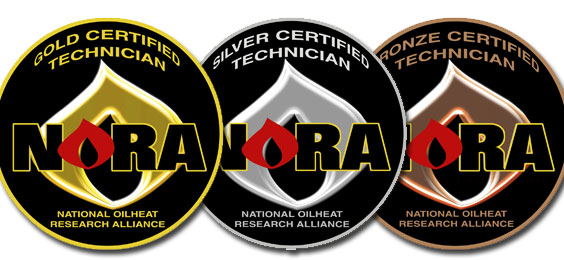Category Archives: Uncategorized
NORA hosts Technical Workshop
The National Oilheat Research Alliance (NORA) held its second Oilheat Technical Workshop on September 18th -19th in Newport, RI. The workshop was held in partnership with the Southern New England Energy Conference. John Huber, NORA President, kicked-off the program describing the workshop’s goals as providing information on the progress of NORA R&D programs and to explore new ideas in an open forum.
Continue reading
NORA Releases 2018-2019 Budget for Comment
The proposed 2018 and 2019 biennial Budget for the National Oilheat Research Alliance has been under development for several months.
The NORA Finance Committee, the Executive Committee and the Board of Directors have reviewed the budget and it is now being released for public comment. At the conclusion of the public comment period, the budget will be forwarded to the Department of Energy.
The 2018 and 2010 budget continues the 2014 changes in the NORA statute and emphasizes research and development, and adds and energy efficiency component. Additionally, the budget continues to emphasize the close working relationships with the state associations.Download the Proposed 21018-2019 NORA budget here.
Q & A with Dr. Butcher about NORA Research & Education Center
In 2016, the National Oilheat Research Alliance (NORA), in collaboration with the New York Oil Heating Association (NYOHA) and Oil Heat Comfort Corp., opened a research and training facility the—NORA Research & Education Center, in Plainview, NY, under the direction of Dr. Thomas Butcher.
Indoor Comfort Marketing’s publisher, Don Farrell, spoke to Dr. Butcher about the lab, its funding, its staffing, its projects and its goals.
Don Farrell: What is the official name of the research center and what is its mission?
Tom Butcher: The official name is NORA Research & Education Center. The mission of the research part is to support the development of advanced technologies that lead to improved efficiency, increased integration of renewable fuels and enhanced reliability of liquid fuels heating systems. Liquid fuels are traditional petroleum-based fuels and also biofuels such as biodiesel and other wood-derived liquid fuels.
DOE Releases New Biodiesel Handling and Use Guide
The Department of Energy has released its latest edition of its Biodiesel Handling and Use Guide. This guide is for those who blend, distribute and use biodiesel and biodiesel blends. It provides information on the proper and safe use of biodiesel blends in heating systems and engines. It is intended to help fleets, individual users, blenders, distributors, and those involved handling biodiesel understand the procedures for handling and using biodiesel fuels.
Massachusetts Energy Marketers Assoc. releases training schedule
NORA ads 4 new online video courses
The National Oilheat Research Alliance (NORA) has added four new online video courses to its online training center at Learning.NORAweb.org. Each course offers two continuing education units (CEU credits) that can be applied to renew or upgrade a NORA’s Oilheat Technician Certification.
NORA Chairman elect addressed industry conference.
The incoming Chairman of the National Oilheat Research Alliance (NORA), Tom Santa, Santa Energy, Bridgeport, CT, spoke to the Metropolitan Energy Conference about “Heating Oil-The Renewable Industry” at the group’s luncheon on November 1 in Bridgeport, CT.
Santa began by stating the oilheating industry, responsible for keeping millions of Americans warm and safe each year, is entering a renaissance with a fuel that is cleaner, less expensive and more reliable than ever. Continue reading
NORA revises Gold Technicians’ Certification
Four new books now available…Advanced Hydronics, Advanced Air Flow, Advanced Efficiency and Advanced Venting.
Oilheat service technicians wishing to upgrade their NORA Silver Certification to the prestigious Gold level now have a revised and updated Gold program to follow.
To achieve Gold Certification status, a Silver Certification is a prerequisite and the technician must successfully complete four of eight Gold certification topic modules.
Currently, six of the eight modules are available for credit including four brand new releases by NORA: Advanced Air Flow, Advanced Hydronics, Advanced Efficiency and Advanced Venting. Additionally, NORA will be releasing Advanced Controls and Advanced Steam in the near future. The remaining two, Oil Tank Installation and Maintenance and BPI’s program Building Science Principles Reference Guide are already in place. Continue reading










